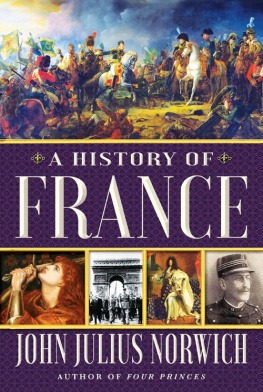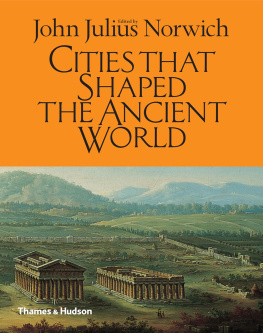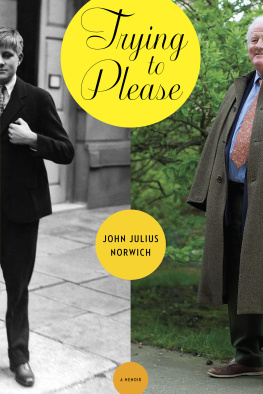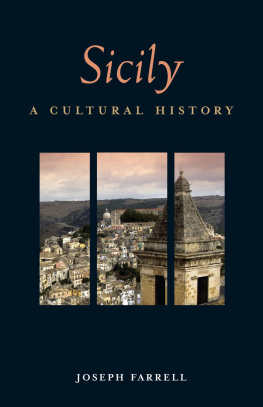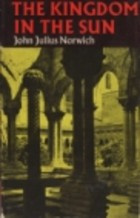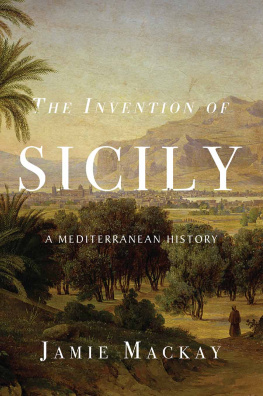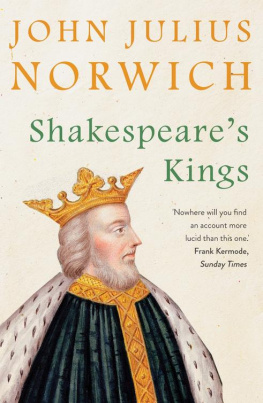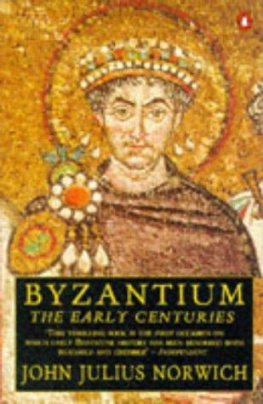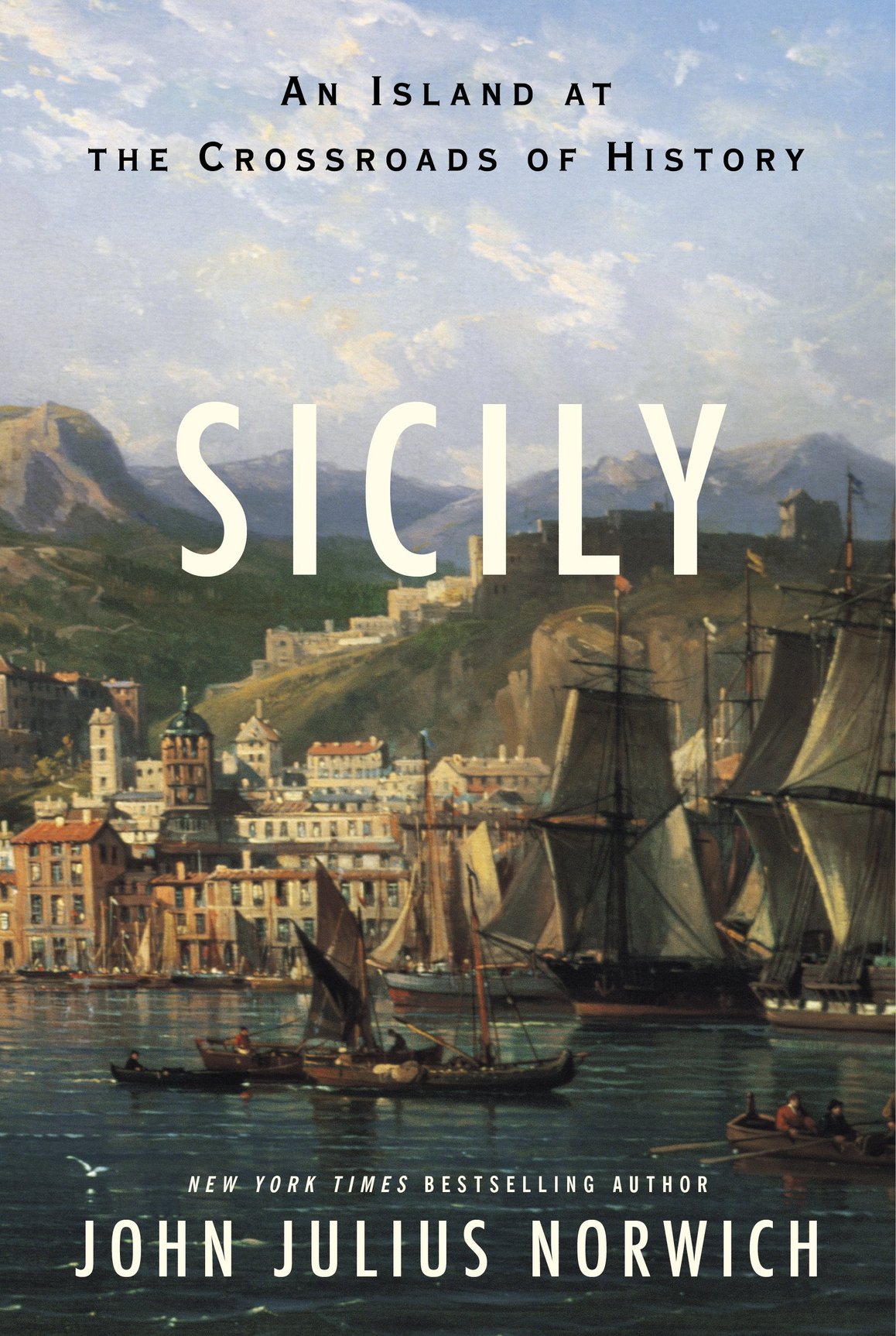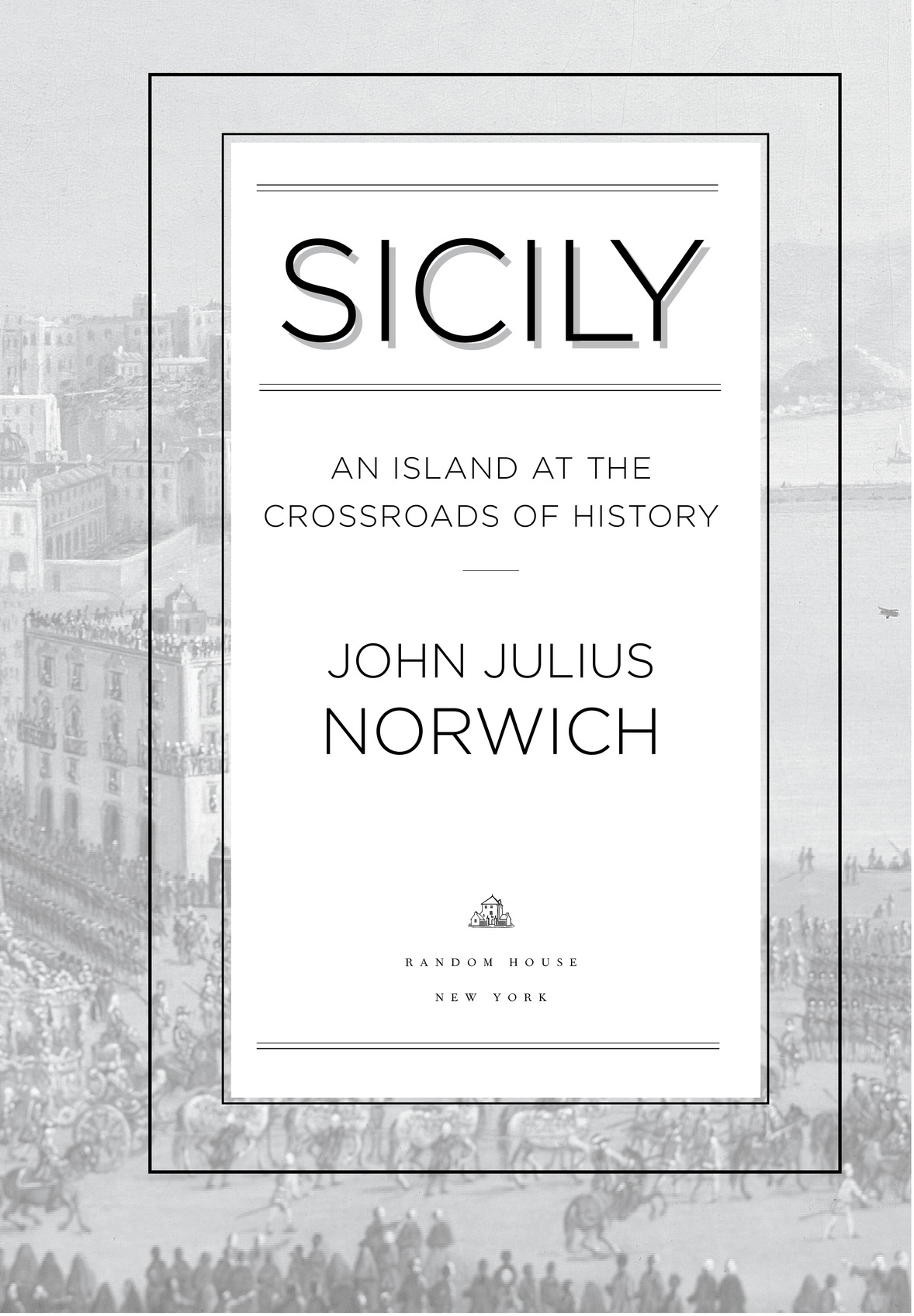Copyright 2015 by John Julius Norwich
All rights reserved.
Published in the United States by Random House, an imprint and division of Penguin Random House LLC, New York.
R ANDOM H OUSE and the H OUSE colophon are registered trademarks of Penguin Random House LLC.
Originally published in the United Kingdom by John Murray (Publishers), a Hachette UK Company.
L IBRARY OF C ONGRESS C ATALOGING-IN- P UBLICATION D ATA
Norwich, John Julius.
Sicily / John Julius Norwich.
pages cm
Includes bibliographical references and index.
ISBN 978-0-8129-9517-6
eBook ISBN 978-0-8129-9519-0
1. Sicily (Italy)History. 2. Sicily (Italy)Civilization. 3. Sicily (Italy) Kings and rulersHistory. 4. Sicily (Italy)History, Military. I. Title. DG866.N67 2015
945.8dc23
2015007371
eBook ISBN9780812995190
randomhousebooks.com
eBook design adapted from book design by Barbara M. Bachman
Cover design: Daniel Rembert
Cover painting: Fine Art Photographic/Hulton Archive/Getty Images
v4.1_r2
ep
Contents
We are old, Chevalley, very old. For over twenty-five centuries weve been bearing the weight of superb and heterogeneous civilizations, all from outside, none made by ourselves, none that we could call our own. Were as white as you are, Chevalley, and as the Queen of England; and yet for two thousand five hundred years weve been a colony. I dont say that in complaint; its our own fault. But even so were worn out and exhausted.
This violence of landscape, this cruelty of climate, this continual tension in everything, and even these monuments of the past, magnificent yet incomprehensible because not built by us and yet standing round us like lovely mute ghosts; all those rulers who landed by main force from every direction, who were at once obeyed, soon detested and always misunderstood. Their only expressions were works of art we couldnt understand and taxes which we understood only too well and which they spent elsewhere. All these things have formed our character, which is thus conditioned by events outside our control as well as by a terrifying insularity of mind.
G IUSEPPE T OMASI DI L AMPEDUSA (TRANS. A RCHIBALD C OLQUHOUN), T HE L EOPARD


I discovered Sicily more than half a century ago, almost by mistake. In June 1961 I happened to be working in the British Foreign Office on a Middle Eastern desk when Iraq invaded Kuwait. (Plus a change) This created a crisis; Britain sent in troops, and the result was that I got no leave till mid-October. It followed that if my wife and I wanted any sun and warmth we should have to go fairly far south; and for that reasonand that reason onlywe decided on Sicily. It would be the first time for both of us, and neither of us knew anything at all about the island. We drove as far as Naples, then put the car on the night ferry to Palermo. There was a degree of excitement in the early hours when we passed Stromboli, emitting a rich glow every half-minute or so like an ogre puffing on an immense cigar; and a few hours later, in the early morning sunshine, we sailed into the Conca dOro, the Golden Shell, in which the city lies. Apart from the beauty of the setting, I remember being instantly struck by a change in atmosphere. The Strait of Messina is only a couple of miles across and the island is politically part of Italy, yet somehow one feels that one has entered a different world.
For the next two weeks we explored that world as comprehensively as we could. To see it all was impossiblethe island covers almost exactly 10,000 square miles and most of the roads were still unsurfacedbut we did our best. It was, I think, not only the quality but the extraordinary variety of what we saw that impressed me most: the ancient Greek, then the Roman, the Byzantine, the Arab and finally the baroque; but it was the Normans to whom I lost my heart. I remembered a paragraph in H. A. L. Fishers History of Europe which had given them the briefest of mentions, but I was utterly unprepared for the wonders that awaited me: to mention just two examples, the Palatine Chapel in Palermo, Latin in its ground plan, its walls encrusted with dazzling Byzantine mosaics, its roof purely Araba wooden stalactite ceiling of which any mosque would be proud; and, better still, the huge twelfth-century mosaic of Christ Pantocrator at Cefal, the greatest advertisement for Christianity that I know anywhere on earth.
Once I had seen them, I could not get those Norman monuments out of my mind, and on our return to London I made a beeline for the London Library. To my astonishment, there was practically nothing in English; I did find, however, two volumes entitled Histoire de la Domination Normande en Italie et en Sicile, published in Paris in 1907 by M. Ferdinand Chalandon, who described himself as archiviste-palographe. M. Chalandon had done his work with exemplary thoroughness; he had studied every source, trawled through countless monastic libraries, produced footnotes, bibliographies, evenrare indeed in French books of that datean index. The only thing he had signally failed to do was to see the point of anything he had written. Fact succeeded fact for about 600 pages; never once was there a suggestion that he found anything beautiful, surprising or especially noteworthy. The result was two volumes of quite stultifying boredom. On the other hand, he had done virtually all the spadework; all I had to do was to make it interesting and readable.
Still, it was a challengeand, as I saw at once, a full-time job. There was nothing for it but to resign from the Foreign Service and take up my pen in earnest. I have not really laid it down since; but it was my own two volumes on the Norman story that gave me the start I needed. While I was working on them, I was regularly asked their subject; only once did I run across someone who had any idea what I was talking about, and fifty years later I still ask myself the same question: how can it be that such a wonderful rags-to-riches story, involving the very brothers and cousins of those Normans who made short work of the English in 1066, is still so little known in England? Nowadays, with so many people going to Sicily for their holidays, the situation is probably a good deal better than it was; but the vast majority of tourists are far more interested in taking photographs than in listening to their guide, so I wouldnt be too sure.
I was still working on the first volume, The Normans in the Southit was to be published in 1967when I was asked to make a documentary on the subject for BBC Television. Today it seems scarcely believable that it was in black and white; but so it was, andthough not very goodperhaps not too bad for a first effort. Things were not made easy for us. The elderly priest in charge of the Palatine Chapel, Monsignor Pottino, was determined to frustrate us at every turn. First he refused to allow us any lights, on the grounds that they would melt the plaster in which the mosaics were set. We argued that we only needed thirty seconds or so, and the lights would be off again long before the plaster could possibly be affected. Then he looked at our tripod. No no, no tripods in the chapel, they might scratch the floor. We forbore to mention the hundreds of stiletto heels that came in every day, but produced a device called a stretcher into which the tripod legs were set, leaving only a smooth surface to touch the floor. Unimpressed, Monsignor Pottino continued to shake his head; never was there a word of apology, or a suggestion of a smile. At this point our director, who spoke beautiful Italian, lost his head. This man, he said to my acute embarrassment, pointing to me as he spoke, is a viscount. He is consequently a member of the House of Lords. When he returns to London he will report to the House on the way in which he has been treated. Monsignor Pottino looked at him pityingly.


